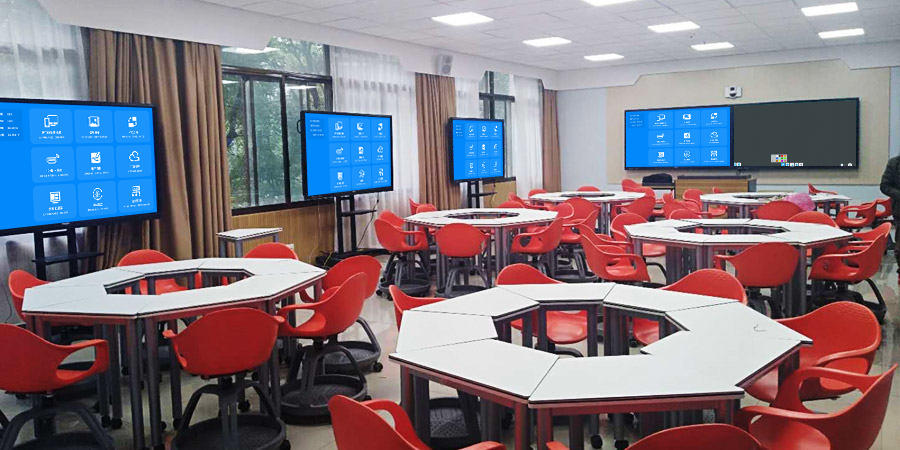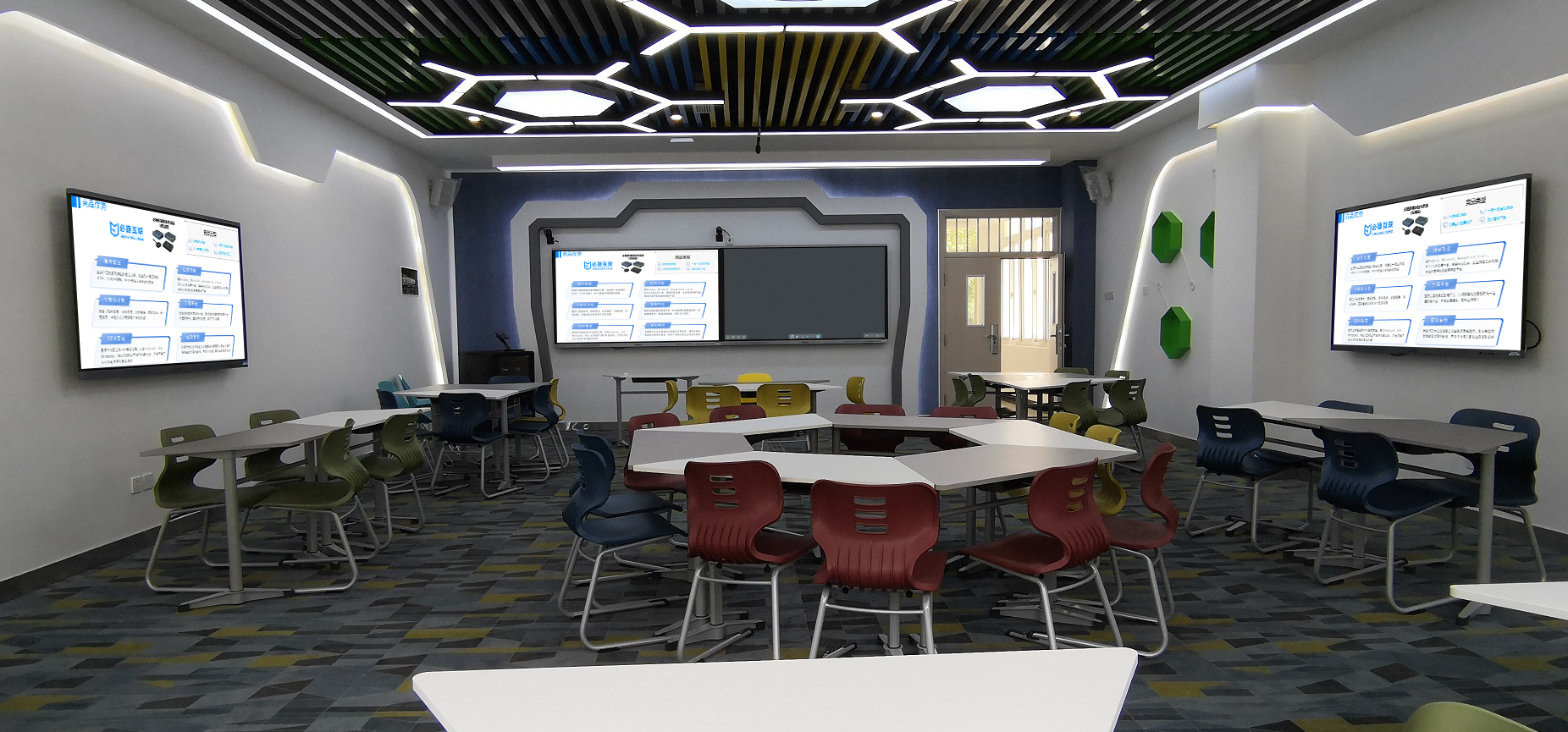The Interactive Classroom: How to Bring Lessons to Life
Do you want to move beyond the traditional one-way lecture? With this screen mirroring software, you can create a highly interactive classroom! It’s compatible with a teacher’s computer, a student’s tablet or phone, and a large classroom display. With its multi-device collaboration and real-time interaction, it makes presenting lessons, group discussions, and sharing work more flexible, easily bringing any classroom to life.
3 Steps to an Interactive Classroom, Easy for All
There’s no need to upgrade classroom equipment. You can start the interaction with a simple setup:
- Network Setup: The teacher’s computer, students’ phones and tablets, and the large classroom display (smart board or projector) all connect to the campus Wi-Fi. Open the mirroring software on all devices, and it will automatically create an “Interactive Classroom Device Pool.”
- Role Authorization: The teacher can set “presenter permissions” for their own computer or tablet in the software. Students can scan a QR code to get “participant permissions,” and the large display will default to “display permissions.”
- Start Collaboration: Click “Start Interactive Class,” and the teacher’s device, students’ devices, and the large display will instantly connect. Lessons, annotations, and homework will be synchronized in real time, and the whole process takes less than 1 minute.
Core Functions for Deeper Classroom Interaction
For the Teacher: Flexible Presentations + Precise Guidance
- Seamless Material Mirroring: A teacher can mirror a PPT, an educational video, or a 3D model from their computer to a large display. It supports “split-screen display”—you can show the original text from the textbook on the left and supplementary materials on the right for a more intuitive explanation. For key points, you can use a writing tablet to draw and annotate on the mirrored content, and the annotations will be synchronized to students’ devices, so you no longer have to erase the blackboard.
- Unrestricted Remote Control: When a teacher leaves the lectern, they can scan the QR code on the mirrored computer screen with their phone to remotely control the slides or pause a video. They can walk around and explain things to students without affecting the presentation. It also supports “lesson preloading,” so you can upload multiple lessons to the software in advance and switch with a single tap, making the pace more flexible.
- Real-Time Feedback: After asking a question, a teacher can mirror a “voting option” to the large display. Students can scan a QR code with their phones or tablets to answer, and the results will be displayed in 3 seconds. This helps the teacher instantly understand how well students grasp the material and adjust the pace of the lesson accordingly.
For the Student: From Passive to Active
- Raise a Hand to Share Work: After a group discussion, students can tap “Raise Hand to Mirror” on their tablets or phones. After the teacher gives permission, they can mirror a mind map or their problem-solving process to the large display for the whole class to critique. It also supports 2-3 groups mirroring at the same time, so you can compare different ideas and spark creativity.
- Save Key Points: Students can scan a QR code with their phones to save lesson annotations or problem-solving processes to their personal learning space. They don’t have to rush to copy notes after class. When they have a question, they can add a “question mark” to the mirrored content, and the teacher will see it in real time and answer it.
- Cross-Device Collaboration: When working in a group, one student can write ideas on a tablet while another researches on a computer. The work from both students can be mirrored to a group screen with the “collaborative mirroring” feature. After the work is compiled, you can push it to the main screen with a single tap, boosting collaboration efficiency by 40%.

Classroom Management: Organized and Efficient
- Tiered Permissions: The teacher can set “prevent students from mirroring at will” permissions and only allow it after a student raises their hand. If the class becomes unruly, the teacher can switch to “teacher-only mode” with a single tap, pausing all student mirroring permissions to get their attention back.
- Trackable Mirroring History: The software automatically records the mirrored content and student sharing history for each lesson. After class, a teacher can review it to analyze the effectiveness of the class interaction. Parents can also get a “class summary” link shared by the teacher to see how their child performed.
- Offline Support: If the campus network goes down, the software will automatically create a hotspot. The teacher’s computer can connect directly to a large display, and students can join the hotspot to ensure that the interactive class is not interrupted.
For All Grades and Scenarios
Primary/Secondary School: Fun and Engaging Lessons
- In a language arts class, a teacher can mirror an illustration from a textbook to a large display, and students can mirror their own hand-drawn illustrations to compare them. In a math class, you can mirror a geometric shape to a large display, and students can use a tablet to drag the shape to demonstrate a proof, making abstract concepts tangible.
- In an English class, you can mirror an audio recording for a listening exercise to a large display. Students can “raise a hand to answer,” and the results will be displayed in real time, making the classroom atmosphere more lively.
Vocational/Higher Education: Hands-On Learning
- In a practical training class, a teacher can mirror the steps to operate a device from their computer to a large display, and students can follow along. When a student has a question, they can use their phone to mirror their screen and ask for help. The teacher can then use a remote annotation to point out the mistake, with no need for one-on-one instruction.
- In a design class, a student can mirror a design draft from their computer to a large display. The teacher can use a tablet to annotate feedback in real time, making detailed adjustments more precise and helping the team polish their work more efficiently.
Public Lectures/Teaching Research: Present and Review
- In a public lecture, the teacher’s mirroring is smooth and the interaction is organized, with clear student work displays. The class’s effectiveness is shown in real time.
- In a teaching research session, the team can review the classroom mirroring history to analyze issues like “interaction design” and “time allocation” together and optimize the teaching plan.
Lightweight and Easy to Manage
The software is compatible with Windows/macOS computers and Android/iOS phones and tablets. It works with a school’s existing equipment, so there’s no need to buy new devices. The installation package is only 80MB, so even an old computer can run it smoothly. A school administrator can use the backend to deploy the software in large batches, set mirroring permissions for each classroom, and get usage data, which keeps maintenance costs low. All content transmission is encrypted to ensure the security of educational materials.
With this screen mirroring software, you can create an interactive classroom that transforms the teacher from a “presenter” into a “guide” and the student from a “listener” into a “participant.” It easily helps upgrade classroom interaction and improve the quality of education.